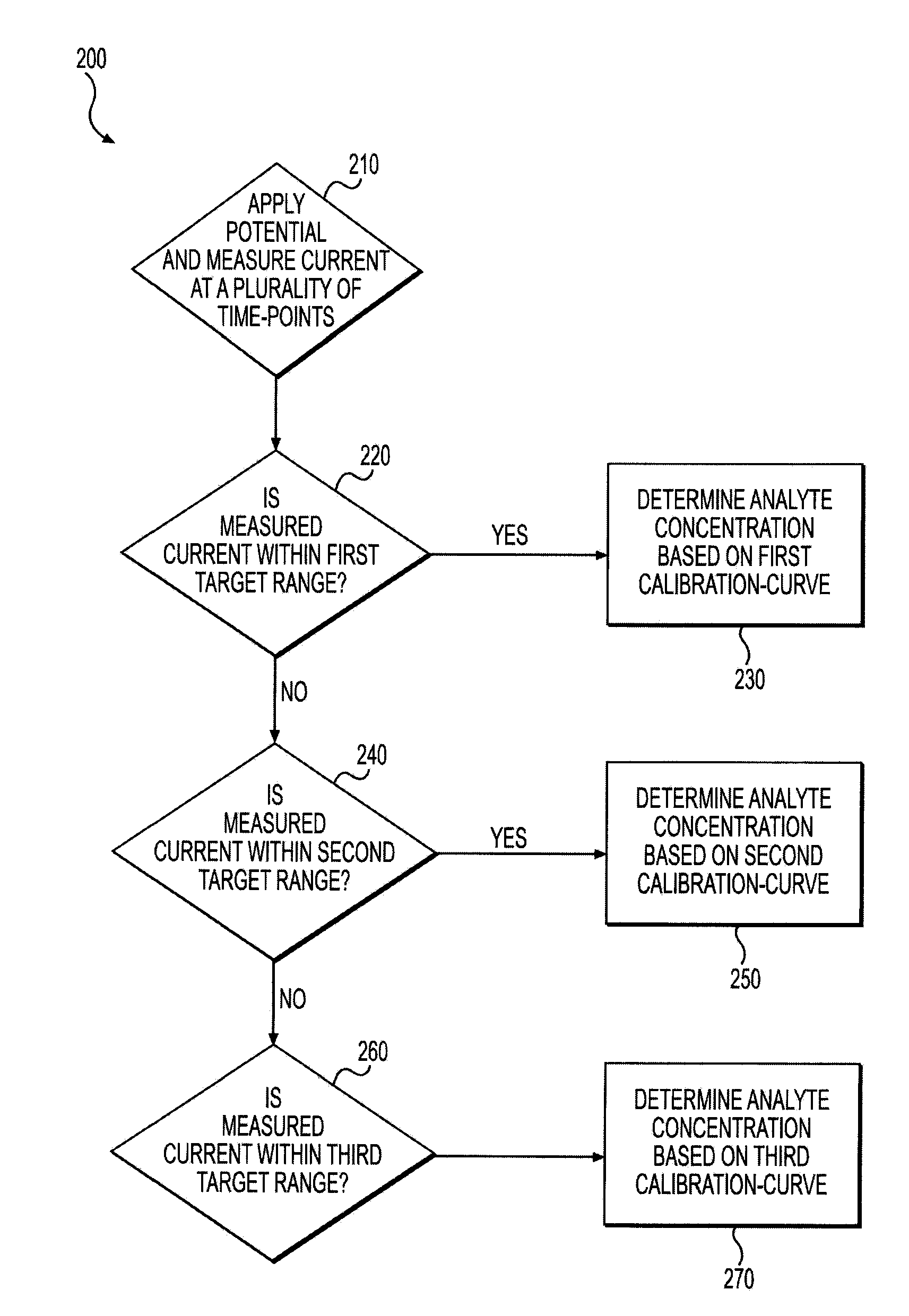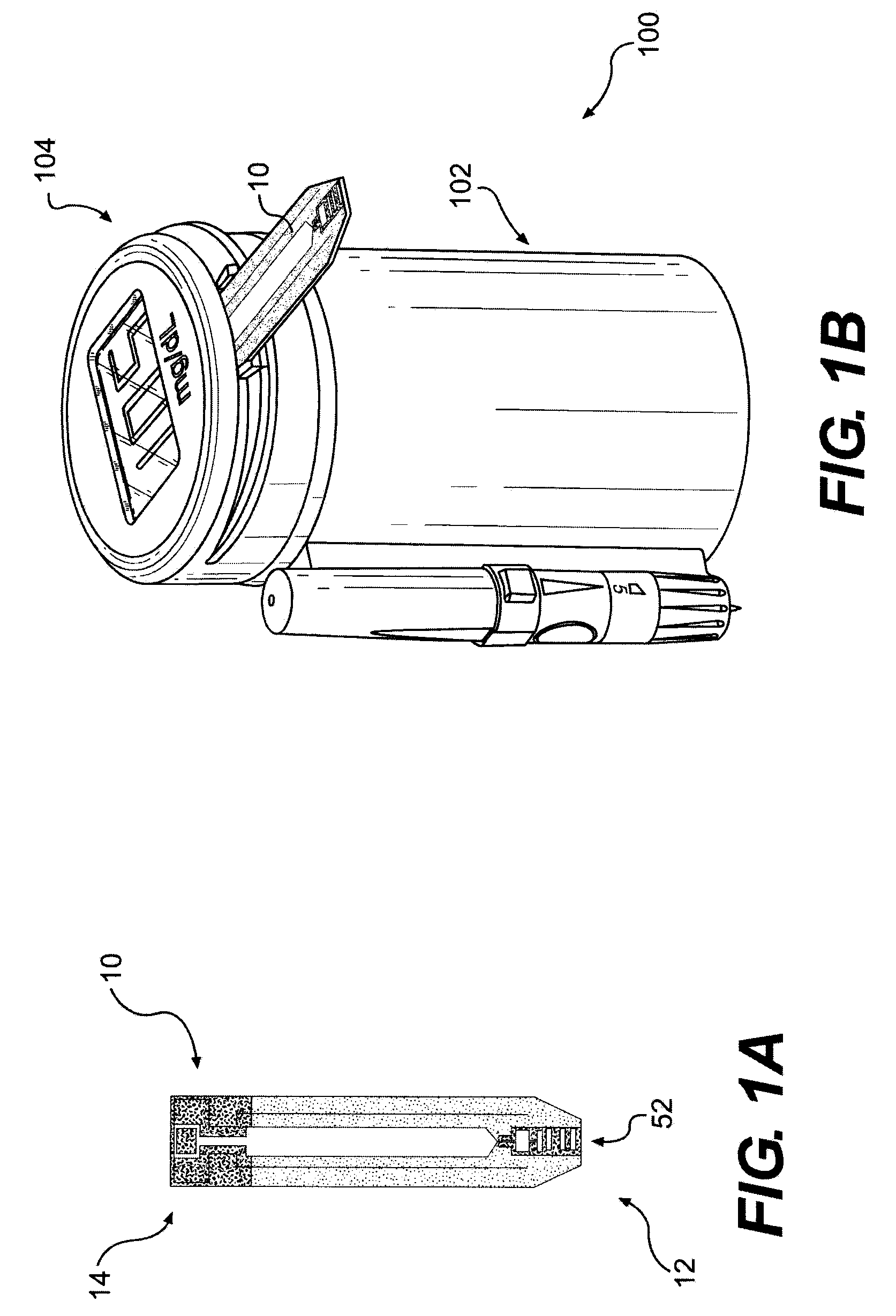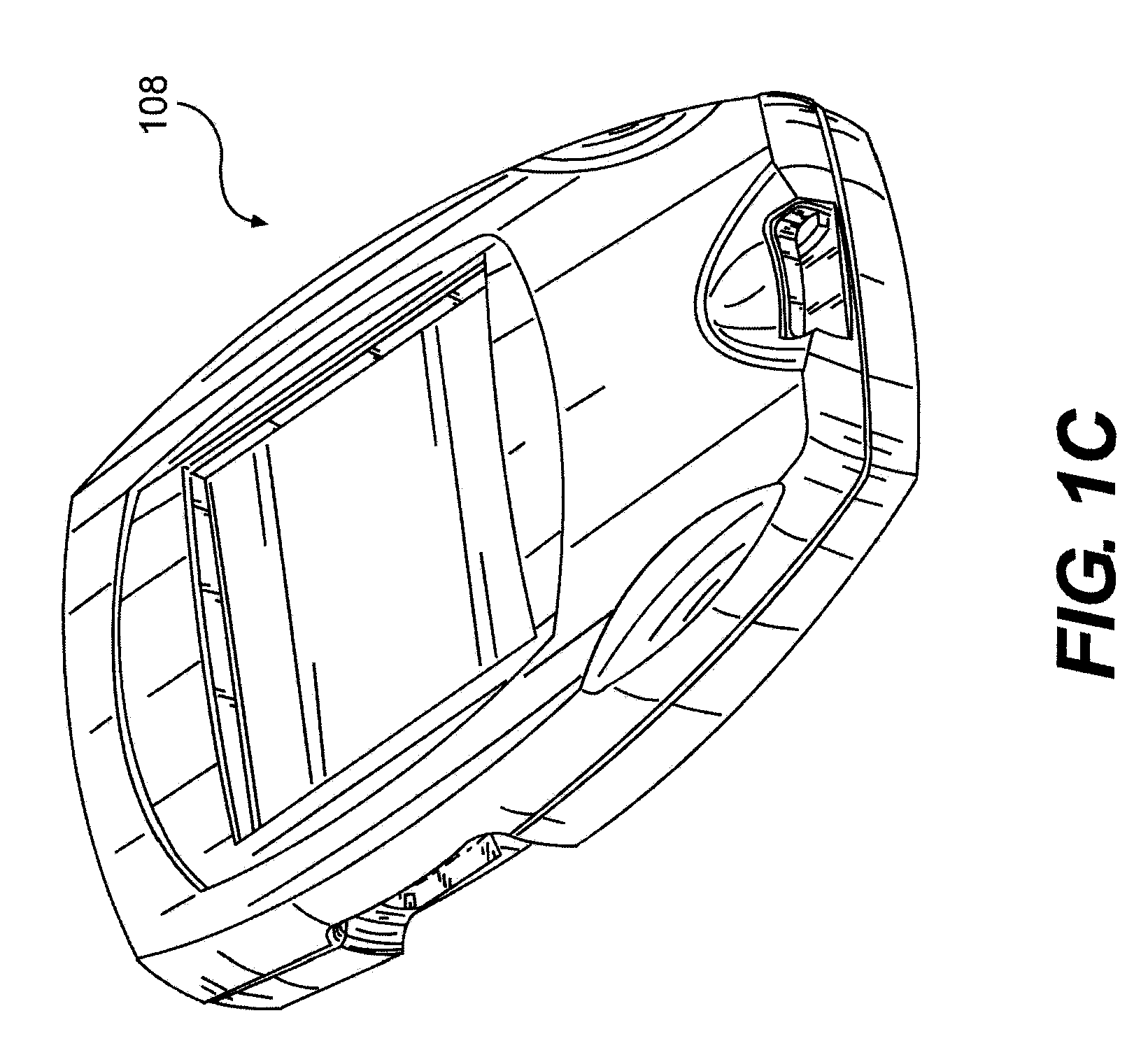System and Methods for Determination of Analyte Concentration Using Time Resolved Amperometry
a technology of time-resolved amperometry and analyte concentration, applied in the field of diagnostic testing systems, can solve the problems of inaccuracy of glucose reading, inability to detect and analyze the signal, and adverse effects of electrochemical biosensors
- Summary
- Abstract
- Description
- Claims
- Application Information
AI Technical Summary
Benefits of technology
Problems solved by technology
Method used
Image
Examples
Embodiment Construction
[0001]This application claims priority to U.S. Provisional Patent Application No. 60 / 952,076, filed Jul. 26, 2007, which is incorporated herein by reference in its entirety
FIELD OF THE INVENTION
[0002]The present invention relates to the field of diagnostic testing systems for determining the concentration of an analyte in a solution and, more particularly, to systems and methods for measuring an analyte concentration using time resolved amperometry.
BACKGROUND OF THE INVENTION
[0003]The present disclosure relates to a biosensor system for measuring an analyte in a bodily fluid, such as blood. The system includes a process and system for improved determination of analyte concentration over a wide range of analyte concentrations.
[0004]Electrochemical sensors have long been used to detect or measure the presence of substances in fluid samples. Electrochemical sensors include a reagent mixture containing at least an electron transfer agent (also referred to as an “electron mediator”) and ...
PUM
| Property | Measurement | Unit |
|---|---|---|
| time | aaaaa | aaaaa |
| time | aaaaa | aaaaa |
| time | aaaaa | aaaaa |
Abstract
Description
Claims
Application Information
 Login to View More
Login to View More - R&D
- Intellectual Property
- Life Sciences
- Materials
- Tech Scout
- Unparalleled Data Quality
- Higher Quality Content
- 60% Fewer Hallucinations
Browse by: Latest US Patents, China's latest patents, Technical Efficacy Thesaurus, Application Domain, Technology Topic, Popular Technical Reports.
© 2025 PatSnap. All rights reserved.Legal|Privacy policy|Modern Slavery Act Transparency Statement|Sitemap|About US| Contact US: help@patsnap.com



